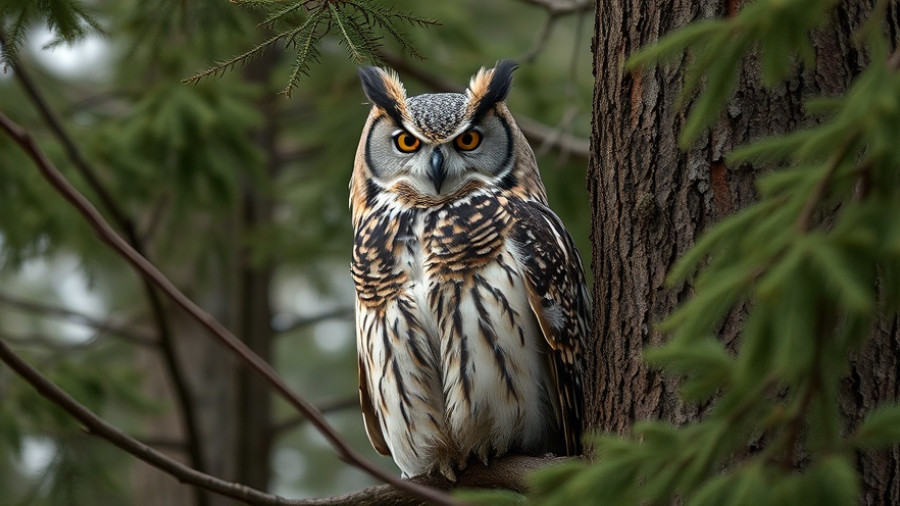
Unraveling the Mystique of Owl Vocalizations
Owls have long been a symbol of wisdom, mystery, and the enchanting allure of the night. Their distinctive calls echo through varied landscapes, from secluded forests to bustling urban parks, captivating anyone who pauses to listen. But these sounds are far more than just haunting melodies; they represent complex communication strategies among owls. Each call serves a unique purpose in the lives of these enigmatic creatures.
The Importance of Owl Calls
Owls utilize their vocalizations for multiple reasons, primarily establishing territory, attracting mates, and communicating with their young. For example, during the breeding season, males often perform elaborate duets to impress potential mates. These calls vary widely among species, illustrating their diverse adaptations to different environments.
Common Owl Calls: What They Mean
Understanding owl calls can be both rewarding and enlightening. The classic hoot is what many associate with these birds, often used for claiming territory or drawing a mate. In contrast, high-pitched screeches can indicate that a young owl is in danger or in distress. Another vital sound is the chirp, often used by parent owls to communicate with their chicks. Each of these calls plays a critical role in the survival and interactions of owls.
Listening to Owls: Where and When
Owls tend to call during the nighttime hours, with peak vocalization periods occurring during their breeding seasons in the spring and fall. Being in the right habitat—whether it’s a hidden forest or a local city park—can enhance your chances of hearing these captivating sounds. Listening attentively can help you identify patterns and species, making owl-watching a rewarding experience.
Conservation and the Role of Vocalizations
Understanding the calls of owls is not just fascinating; it’s a crucial aspect of conservation efforts. Researchers monitor owl populations by recording their calls in various habitats, using this data to assess ecosystem health. The presence of specific owl species often indicates a thriving environment, highlighting the interconnectedness of wildlife and their habitats.
In conclusion, the more we listen, the better we understand the vital role owls play in our ecosystems. Their calls are not just sounds; they are messages, alerts, and bonds that form the foundation of their existence. As we continue to explore and protect these enigmatic birds, let’s remember the importance of their unique voices.
 Add Row
Add Row  Add
Add 




Write A Comment